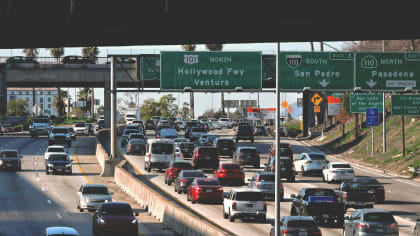MONDO AGNELLI
A Look at Fiat and Its Founders
This article is from our archives and has not been updated and integrated with our "new" site yet... Even so, it's still awesome - so keep reading!
Published on Sun, Jan 22, 2012
By: The LACar Editorial Staff

BOOK REVIEW
By Zoran Segina
Hardcover: 368 pages
Publisher: Wiley; 1 edition (December 13, 2011)
Language: English
ISBN-10: 1118018524
ISBN-13: 978-1118018521
Product Dimensions: 9.1 x 6.2 x 1.2 inches

The original screenplay for the 1969 classic caper “The Italian Job” called for the gold heist to take place in Milan. The producers, having failed to obtain appropriate permits for a monumental traffic jam in the city center, which is at the heart of the movie, chose to shoot the action in Turin. Upon learning this, Fiat approached the producers with the following offer: If they used turbo charged Fiat 500s instead of Minis, the film makers could have as many cars as they wanted to crash, and would be provided with all the luxury vehicles they needed to destroy - including Lamborghini Miura, Jaguar E-Type, and Aston Martin. In addition, Fiat offered the film makers a fifty thousand dollar cash bonus, and a top of the line Ferrari. The above vignette perfectly illustrates the keen awareness by the Agnellis of the power of image - before most people knew what the term meant. The first part of the tightly written and meticulously researched book “Mondo Agnelli” by Jennifer Clark endeavors to offer the American readers a glimpse of the last hundred years of the Agnelli family - a remarkable path of the group of colorful individuals that is more than any other name in Italian history associated with the industrial progress of the country. From the founder of the family’s industrial fortune Giovanni Agnelli, through their social ascent as a result of marriage of his son Eduardo to principessa Virginia Bourbon del Monte di San Faustino, to the superstar status of their son Gianni, family members mined their steadfast adherence to discipline, organization and the sense of tradition to become a dominating force in Italy. The history of Europe is replete with examples of social mergers between successful members of the merchant class and nobility. The resulting arrangements reinvigorated the aristocracy and provided social prestige to the rising powers of the new arrivals. The 2004 marriage of the keeper of the family tradition, the young John Elkann, to Donna Lavinia dei Principi Borromeo Arese Taverna, confirms that the Agnellis have always known how to take full advantage of their milieu. Alas, hundred and forty pages is woefully insufficient to fully depict the complexities of characters and inner dealings of the Agnelli family that was not only influencing much of the country, but spread its domination far beyond the Italian borders. To make the subject more interesting and relevant to the contemporary reader, Ms. Clark has to resort to presenting the events out of chronological order. This makes the narrative - replete with details, names and intricate plot lines - occasionally hard to follow. For those readers who are already familiar with the history of the Italian society and the events depicted in the book, the first part is a bittersweet walk down the memory lane, into the worlds and times that either no longer exist or have lost their relevance, crushed by the evermore brutal behemoths of industrial globalization. The readers for whom the “Mondo Agnelli” represents the first foray into the fascinating universe of the Agnellis and Italy, should simply enjoy Ms. Clark’s rich presentation, rather like sampling for the first time an exotic flavor of a genuine Italian ice-cream in one of the gelaterias under the colonnades on a Turin main piazza. Here is hoping that they develop the liking for the taste, and seek to discover more. Ms. Clark’s reference section graciously offers dozens of books and articles on the subject. True to their national heritage, the world of the Agnellis was always separated into the celebrity side of the family, visible to most, and the business side, largely umbrageous and out of sight. It is exceptionally difficult to write about the events related to the business holdings of the closely held family organizations, especially in the Southern Europe where sheltering one’s assets and business dealings from the fiscal authorities rises to the passion of a national sport. The business world of Agnelli was based on the foundations of decades-long mutual relationships where the personal connections carried far more weight than corporate balance sheets. The book, for example, does not have space to more fully describe what was - at the time - Fiat’s revolutionary foray into the markets of Eastern Europe, most notably into the Soviet Union in 1966. The Lada sedan, based on the Fiat 124, was in such a demand in the USSR that the average waiting list to obtain the automobile stretched to ten years. This reviewer still fondly remembers his first car - a Yugoslav made Zastava 750. It was a car based on the Fiat 600, and manufactured by the company that later build the infamous Yugo - in essence a poorly executed version of a Fiat 127. The second part of the book covers only the past ten years. The world inhabited by Sergio Marchionne, the Chief Executive Officer of Fiat since 2004, is harsh, naked and unforgiving environment where decades of corporate history and the fate of national institutions can be discarded on the basis of the last year corporate balance sheets. Because of Ms. Clark’s temporal and physical proximity to the events, the participants, and the sources of the information, she is able to provide exceptionally rich detail of the undertakings and machinations to save Fiat, and then to save Chrysler. The complexity of the narrative in the second part of the “Mondo Agnelli” stems from the fact that the relevant events often take place simultaneously on different continents, and unlike the staid dealings of the Agnelli clan and their collaborators, move at the rapid, and often unexpected and unpredictable pace. The description of the activities of Mr. Marchionne and his team closely resembles a recount of a surgeon’s battle to save the dying patient with daring procedures that may not necessarily guarantee his survival. Perhaps no other fact offers a starker contrast between the world of Agnelli and that of Mr. Marchionne than the selection of clothing. Gianni Agnelli’s seemingly careless sartorial choices are in fact a product of long deliberate planning with the objective of exuding sprezzatura - an effort to make complex tasks look easy. Mr. Marchionne most likely wears a sweater because he finds it more suitable for the job ahead which he knows cannot be made to look easy and is, in fact, hellishly difficult. Yet, despite his uncompromising demeanor and attitude, Mr. Marchionne possesses that rare and exciting characteristic of an automotive executive officer - a leadership personality. Upon meeting Mr. Marchionne, or Mr. Mullaly of Ford, or Mr. Ghosn of Renault -for just a few minutes - one stands ready to drop everything and go work for them if only they would ask, yet knowing full well that the task may be extraordinarily hard, and that one may not last on the job. The time line of the events depicted in the second part of the book makes it impossible to give the subject a proper historiographic distance, a fact that Ms. Clark readily acknowledges. The massive reorganizations undertaken at Fiat took place very recently with the subsequent Fiat-Chrysler merger barely three years old. One has to remember that, in 2001, the then three-year-old Daimler-Chrysler deal seemed very promising. Nevertheless, for the final chapter of the Mondo Agnelli one has to go beyond the last page of the book. According to the most recent corporate results Chrysler sold 1.4 million vehicles last year. The sensational unveiling of the 2013 Dodge Dart at the Detroit auto show indicates that the corporate helm is in steady hands. But these successes are counter-balanced by weaker than expected sales of the new Fiat 500 in the U.S., and the abrupt departure of Laura Soave, the head of the American operations. The downgrading of the euro fund, Italy’s massive sovereign debt obligations, and the impeding euro crisis are all likely to present additional challenges for Fiat. Perhaps this is the most interesting aspect of the “Mondo Agnelli” - after having offered her readers an insight into the fascinating world of Fiat and its founders, interwoven into the recent dramatic events centered around Mr. Marchionne, Ms. Clark makes them gradually arrive at a startling conclusion - that the true last chapter on this subject has not been written yet. - Zoran Segina, Editor-at-Large Available on Amazon here




